THE GREAT WALL OF SPOILERS
Perhaps I should have realized it when I heard Dr. Kovich reference Gilligan’s Island in the opening scene of STAR TREK: DISCOVERY‘s tenth episode of season four, “The Great Barrier.” Realized what? Well, those castaways set out on a “three hour tour” and ended up spending a LOT more time stuck in the same place. And that’s kind of what’s been happening with Discovery this season.
While there’s nothing inherently wrong with the decision to have season-long story arcs—as Discovery has done since season two and arguably since season one)—it does present a challenge for properly pacing out the general plot line. Thirteen hours (give or take) is a massive of time to fill locked into the same overall narrative. It’s certainly not impossible to keep a storyline going for that long, but it often takes a little bit of “padding” to stretch things out a bit. And a little bit is good. It gives the creators a chance to develop the characters, something that was frustratingly absent with the manic pace of the first two seasons. So, yeah, a little bit is good. A…little…bit.
For the first half of season four, the pacing of the overall story arc was decent. The anomaly (DMA) wasn’t even introduced until the end of the first episode, and it kind of took a back seat over the course of the next few episodes, although the second episode dealt with the trying to collect data on the distortion while spotlighting Book’s emotional devastation. But then we had episodes dealing with (in this order) finding a rogue Romulan ninja nun, Tilly leading a group of Starfleet cadets (and Adira) to safety after a shuttle crash while Burnham and Saru try to talk Ni’Var into rejoining the Federation, and then freeing trapped prisoners in the path of the DMA’s destruction while an experiment on board Discovery nearly destroys the ship (and introduces Ruon Tarka).
Five episodes in, and there was a steady build-up of the DMA in importance. That led to episode six, where Discovery has to actually enter the subspace rift to collect otherwise irretrievable data on the DMA. And now the main story arc had taken center stage, exactly when it should have, building to a big clash in episode seven (just before the holiday hiatus). Michael and Book lock horns over what to do about the device generating the DMA: destroy it or try to contact Unknown Species 10-C and ask them politely to turn it off. Both arguments sounded reasonable, something which has been a part of Trek since TOS.
Perfect pacing so far. The first half of the season ended with a strong cliffhanger and the promise of even more revelations and action in the final six episodes.
And then Star Trek: Discovery kinda got stuck…
There was nothing inherently bad about episodes 8, 9 and 10 individually. Each was well-written (albeit maybe a little too predictable at times) and enjoyable to watch. The problem was that, rather suddenly, all of the momentum and anticipation that had built up over the first seven episodes was suddenly left outside in the parking lot, engine running, while the writers ran inside to grab a few things. (That was a metaphor, by the way.)
The first of the three “just wait here for a short bit” episodes was fine. Book and Michael meet on a gambling barge, it’s kinda fun to watch them interact the way they used to back when they were Bonnie and Clyde, and it gave Michael one last chance to talk Book out of what she believed was a big mistake. She failed.
Okay, time to get back to the excitement, right? Well, not quite yet.
The next episode featured Michael taking one last shot at talking Book out of his extreme, ill-advised solution. There was some action to keep us interested, of course, but pretty much this episode existed simply to make Tarka look a little more dastardly while Michael makes headway in bringing Book slightly closer to redemption. But as I said last week, we pretty much knew (even from the title of the episode, “Rubicon”) where this was headed. Tarka would fire off the weapon and it wouldn’t work…setting up the inevitable confrontation as Starfleet must finally engage with Unknown Species 10-C directly.
And that’s what I expected to see in this episode. But we didn’t get it…not even in the final minutes. Instead, we got “The Great Barrier.” And just in case you weren’t watching carefully, the episode’s title didn’t just refer to crossing the Great Barrier at the edge of the Milky Way Galaxy (the A-story) but also to each of the other storylines going on this episode. Let’s take a look at how many barriers were crossed this episode…
1. THE BARRIER AT THE EDGE OF THE GALAXY
Ever since the very first episode of Star Trek with Captain Kirk, “Where No Man Has Gone Before,” the reality of this franchise has established that there is some kind of mysterious energy barrier at the outer edge of our galaxy. It gave certain humans who encountered it heightened mind powers, creating a couple of “gods,” but it never really made much sense. After all, our galaxy is shaped like a frisbee. So does the barrier just extend around the outer edge of the frisbee like a bicycle tire? If that’s the case, then just go over or under it and—presto!—you can leave the galaxy.
Or does the barrier extend over the top and bottom, as well—like a DVD case—and you can encounter the great barrier just by traveling vertically 1,000 light-years or so? If that’s the case, then the total surface area of the entire energy barrier is a mind-blowing 9 TRILLION square light-years of pure negative energy….and that’s kinda ridiculous. Also 1,000 light-years is barely a year’s travel at standard warp speed (possibly less). So you’d think Starfleet would have studied the barrier continuously since Kirk and the Enterprise first discovered it in the 23rd century. And likely, Starfleet would have long since found a way to get through it.
And in fact, they did! Despite Admiral Vance saying, “They’re leaving the galaxy. We’ve never done that…” we all remember what happened in the TOS episode “By Any Other Name”:
So the Enterprise made it through (twice…out and back in again!) 900 years before Starfleet needs to get to Species 10-C. Why Discovery—with all of its future modifications like programmable matter, a cloaking device, and detachable nacelles—can’t do the same thing the old Enterprise did seems like the writers have yet again dropped the (canon) ball. And of course, the Enterprise-D also left the galaxy in the first season TNG episode “Where No One Has Gone Before.” So someone go tell Admiral Vance that Starfleet vessels have definitely left the galaxy before.
That said, once again the visual FX looked fantastic. The CGI team has come a loooooong way since the atrocious VFX of season one. Granted, the desaturation of color inside the barrier was yet another thing inconsistent with previous trips through the barrier. But complaining about lack of continuity with established canon is is kinda like complaining about Saturday Night Live not being funny anymore.
Anyway, Discovery gets through the barrier. Yay. Not sure that required a nearly a full episode, though. Of course, it wasn’t the whole episode. Much of the episode was dedicated to the space bros…
2. THE BARRIERS OF RUON TARKA
The episode began with a barrier of trust (or lack thereof) between Book and Tarka. After the events of the previous episode, Book was ready to maroon Tarka—possibly for the rest of his life—on a planet whose inhabitants hadn’t even discovered electricity yet. No phone, no light, no motor cars…not a single luxury. And while Professor Tarka might be a super-genius, I doubt even he can build a spaceship out of bamboo and coconuts.
But by the end of the episode, thanks to Tarka’s “origin story,” he and Book are space bros again, with Book even offering Tarka some emotional support and optimism. But that wasn’t the only barrier Tarka crossed this episode.
When Tarka is first imprisoned with Oros, there’s a barrier between them. Tarka’s a self-absorbed jerk, of course, and Oros is afraid to get close to anyone after what happened to his previous cell mate (lab mate? engineering partner?). But slowly, the two prisoners get closer, crossing the barrier between them to become friends. And when Oros learns the Tarka had made a secret deal with Osyraa to spy on Oros, he still forgives Tarka in the end because there is no longer any barrier between them.
Speaking of which, I’d originally assumed that Tarka was yet another gay character when he revealed to Book that he was trying to reunite with someone whom Tarka referred to as “he.” But this relationship remained somewhat undefined. In a way, these two beings—Tarka and Oros—became closer than lovers, sharing a deep faith in each other and their shared dream. As such, we never see a scene of the two of them kissing (giving the “woke” complainers one less thing to complain about, I suppose). But I give props to the show’s creators for 1) making Oros a total alien wherein a sexual attraction might not even be a part of the equation, and 2) resisting the temptation to show the two doing anything other than holding each other or laying a head on the other’s shoulder.
But now let’s head from “bromance” to “romance”…
3. THE BARRIER BETWEEN SARU AND T’RINA
It’s been kinda fun watching Saru and Ni’Var President T’Rina flirt like skittish teenagers over a portion of this current season. Considering all of the established romantic couplings on this show—BookBurn, HughPaul, Gradira—it’s nice to see a relationship still in the adorable developmental phase.
That said, this thing needed to start going somewhere soon because, other than waiting to finally meet Species 10-C, waiting for SaRina to become a thing was getting rather excruciating. Of course, when one character is the president of a planet and the other is the first officer of the only spore-drive capable starship in the fleet, long distance was probably the least of the many barriers to this relationship. But at least, by having Discovery leave in a hurry before the Ni’Var ambassador could arrive, the writers provided a convenient excuse for T’Rina and Saru to be on the same ship at the same time.
Of course, we can’t make it TOO easy to get them together, so after Saru works up the courage to openly express his feelings to T’Rina, he is quickly cock-blocked (Spock-blocked?) by the president’s pointy-eared aid, and Saru is left to wonder if he’s going to be banished to the Ni’Var equivalent of the “friend zone.”
A little while later, Dr. Culber sees Saru and T’Rina talking uncomfortably. I’ve read two different reviews referring to Culber as Saru’s “wingman.” In my mind, a wingman interacts with both members of the budding relationship, trying to get them together. I see Culber as more of a support system and “dating coach” for Saru. But that’s neither here nor there.
The important thing is that, after Saru opened up, T’Rina unexpectedly closed up, creating a new barrier between them. But in the end, thanks to the disturbing news from Admiral Vance about the impending DMA threat to Earth and Ni’Var, T’Rina crosses her barrier to seek the support of Saru. So…yay again.
4. THE BARRIER BETWEEN BURNHAM AND RILLAK
So we’ve had a bromance and a romance, and now it’s time to talk about a womance (yes, that’s apparently a real word and the female equivalent of a platonic bromance).
What this series sometimes lacks in nuanced writing it makes up for in very strong performances by many of the actors featured. Every character whom I’ve mentioned so far—Book, Tarka, Saru, and T’Rina—is being played masterfully and has become much more compelling than I’d ever have predicted.
And now we get to Federation President Rillak and, of course, Captain Michael Burnham. While my opinion of SONEQUA MARTIN-GREEN as an actress is generally positive, and while I acknowledge that leading a large cast on a series where nearly all episodes have at least one major storyline involving your character is a huge challenge that Sonequa has graciously accepted, her acting on this show just doesn’t resonate with me. I’ve never really connected in any meaningful way with Michael Burnham, and I find nearly all of the other major characters on the series (and even some of the minor ones) more compelling to watch. But President Rillak, played by CHELAH HORSDAL, exists at a whole other level entirely. With credits stretching back three decades, Chelah is an accomplished actor, and it shows in her performances.
This includes Laira Rillak, who could so easily have become just a throwaway character on the show, a foil for Burnham. Instead, Chelah breathes such an amazing life and energy into the Federation president that she actually seems to bring out a better performance than we usually get from Sonequa. And part of that stems from the great barrier that existed almost from the beginning between these two strong female characters, each new to her leadership role and feeling she had something to prove. As such, Burnham and Rillak both had to “mark their territories,” and things seemed tense not only at first but throughout most of the episode.
And while the impending destruction of Earth and Ni’Var felt a little forced (of course Earth was going to be threatened…it’s the best way to get the audience committed to the danger), it served up a minor issue for the two women to argue over: whether or not to share the news with the crew and the dignitaries. And when Rillak crosses the barrier over to Burnham’s way of seeing things (’cause that’s the rule on this show: Michael Burnham is never wrong), Rillak and Burnham can now truly begin their womance as two strong, stubborn, smart female leaders with good hearts.
And hey, if you felt some déjà vu this episode seeing Michael openly disagreeing with another confident female on the bridge, that’s simply because you saw the same thing last episode with Burnham and Commander Nhan. I now feel that Nhan’s presence last episode was even less necessary (better it had been Saru or Vance) because, honestly, the version of the same storyline with Brunham and Rillak worked much better than with Nhan—likely because Rillak is played by a better actor.
5. THE BARRIER OF AWKWARDNESS BETWEEN STAMETS AND ADIRA
This “barrier” was just kinda weird and seemed to be added to the script to create an unnecessary D-story (possibly E-story?) to the episode that would give Adira some screen time and Paul something to do other than provide a little snarky comedy relief from Engineering to lighten the otherwise life-and-death dramatic moments going on.
This odd “storyline”—if we can even call it that—was made up of a total of two scenes. In the first, Paul’s effusive, over-the-top praise of Adira provides some convenient exposition they’re upgrading the shields and will monitor the forward emitters and repair them if they’re damaged by the barrier, keeping the ship from being destroyed). Paul even makes sure to use the “they” pronoun multiple times, just as Adira asked him to last season. Adira feels a little embarrassed by all the adoration (Adiration?) and politely leaves. End scene.
Then, shortly before the conclusion of the episode, Adira walks into Engineering, and Paul apologizes for earlier, explaining that he was just concerned that Adira might be missing Gray, and he wanted to make them feel better. But lest the audience begin to believe there might be something romantic going on between the gay guy and the non-binary, Paul explains that his father was never supportive of him, and he wants to be supportive of Adira. And so, Paul is feeling…fatherly? Um, okay. I suppose it defines their relationship and gives the writers something to work with later on. Of course, we really know nothing about Adira’s relationship with their actual parents, so maybe Paul is being a little presumptuous? Not really sure.
For me, the real “barrier” here was for me just to make it through these two scenes on the way to what I hoped was finally getting to meet Species 10-C. And that brings us to the final barrier…
6. THE REAL BARRIER HAS BEEN THE PAST THREE EPISODES!
So I’d like you to start singing the song You Can’t Hurry Love (either the original Supremes version or the Phill Collins 1982 cover)…but replace the word “love” with “Species 10-C.”
That’s how I’m starting to feel.
In the play Waiting for Godot by Samuel Beckett, Godot never actually shows up. I am really, REALLY hoping that isn’t the case with Discovery season four. But these past three episodes have felt like a great barrier between the restart after the mid-season hiatus and actually making contact with this mysterious race. Is the audience finally through our barrier now that Discovery is finally through their barrier?
I mean, Book and Tarka are on their way, right? The clock is ticking toward the destruction of Earth and Ni’Var. We’ve just found their planet. What’s to stop the crew from finally contacting Species 10-C?
Well, have you watched the trailer for episode eleven? We might not be completely through the great plot barrier just yet.
How long must I wait? How much more can I take…?

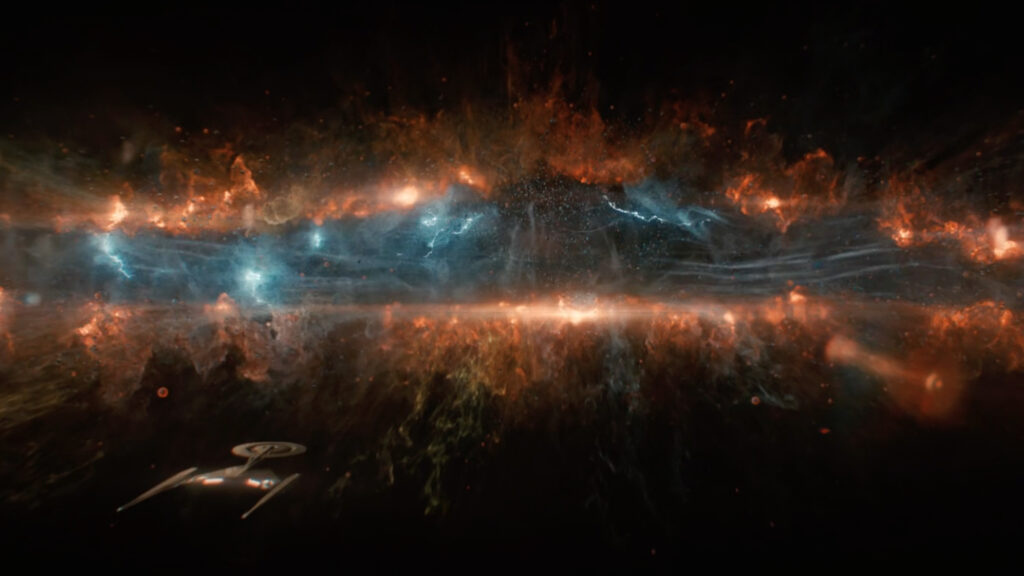
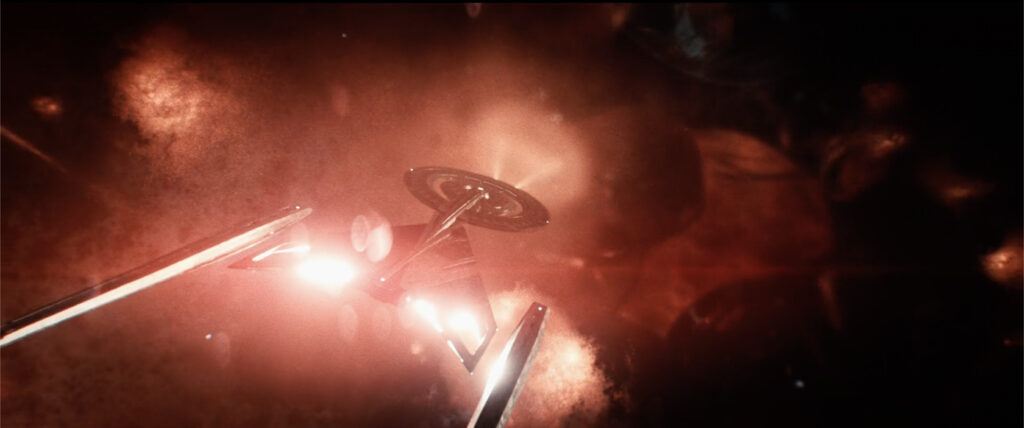
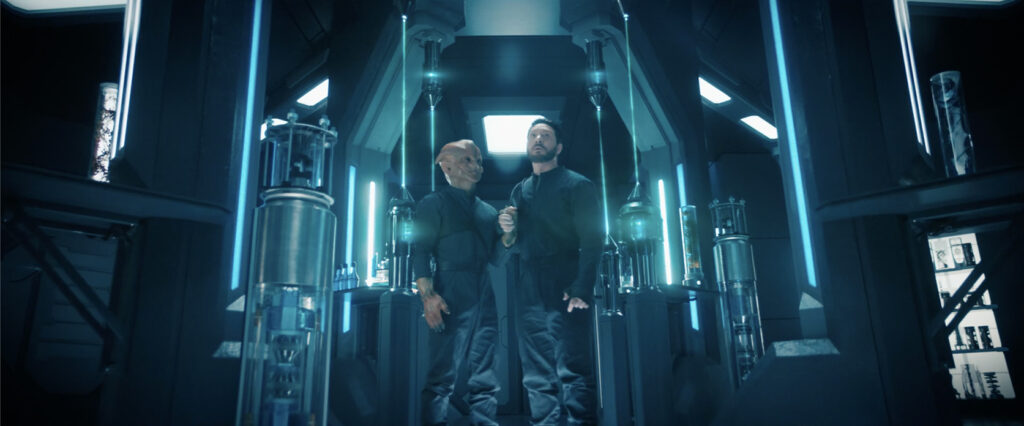

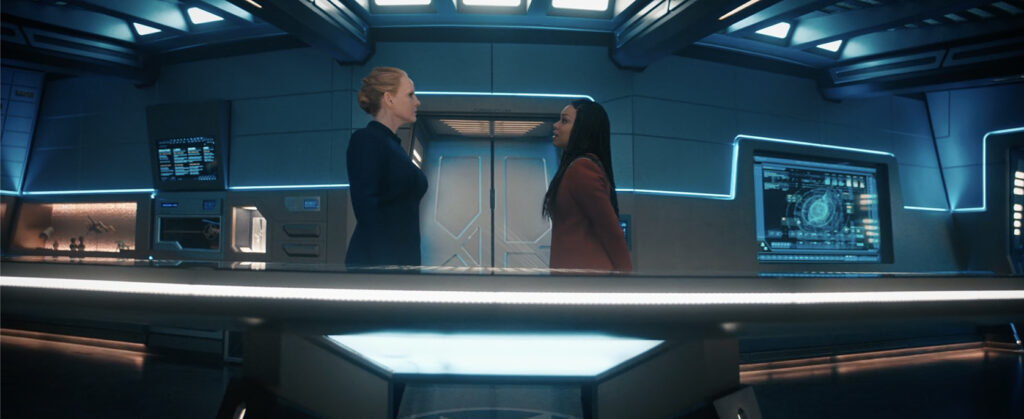
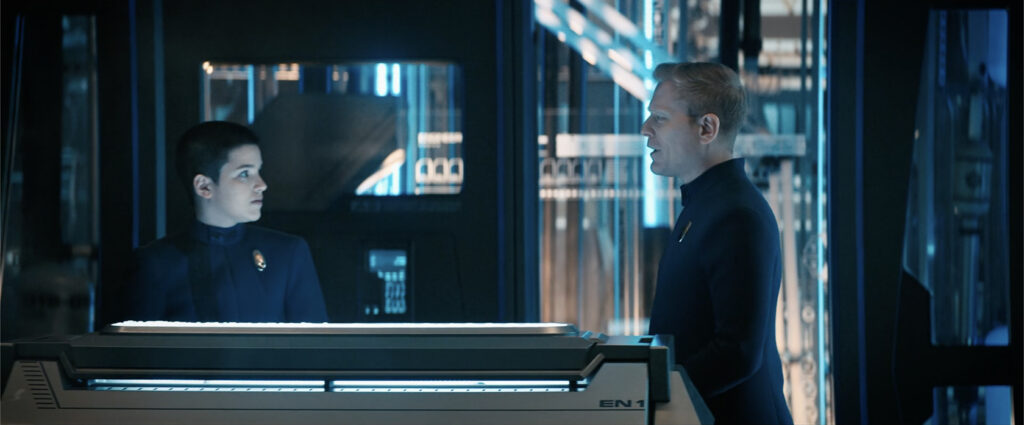
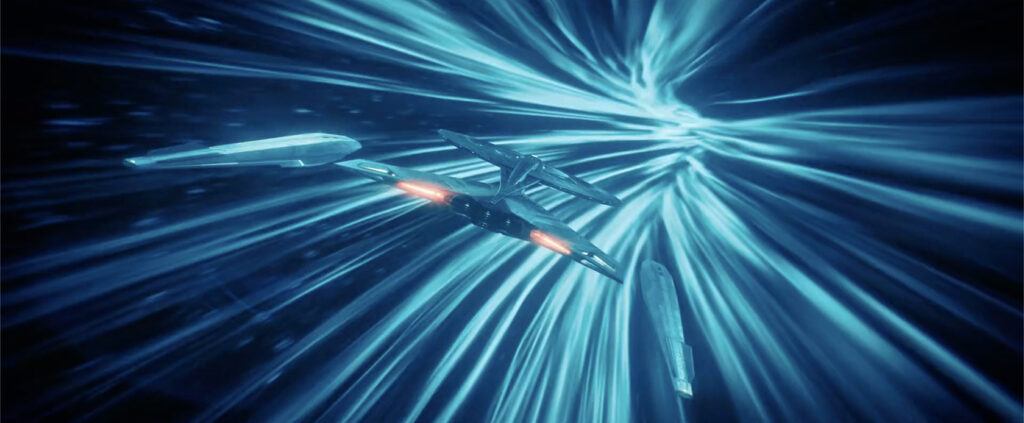
I think it’s obvious, the 10-C is the season cliffhanger. Earth & Nivar are on the verge of destruction, and Book & Tarka somehow manage to save the day, next season. Tarka escaped to LaLa land, and Book is redeemed. Species 10-C is so malevolent, they needed to be uterly destroyed. Meanwhile, back on the “Love boat” for me, the most cringe worthy moment, was sadly, Saru & T’Rina. They haven’t even had a real “first date” and Saru comes off as suggesting marriage? Just sex? Or maybe he could be her pet? SMH
In real life, that’s a relationship killer. I mean, who are the disfunctional writers who come up with this Crap? (Painful eye rolling) I expected Culber to smack Saru upside his head, asking, what the hell is wrong with you? It’s dawned on me, that the writers are so inept IRL, that they don’t have a clue most of the time. It’s the reason almost all the characters are so maladjusted emotionally, because, the the writers are themselves. Or they have such a Warped view of life, they can’t help themselves? Ok, end of rant. It was nice to see Burnham bury the hatchet with Queen Rillack, even though, a good Cat Fight, might have been more interesting. It’s not that I’m against a Woman leader, actually, one of the best companies I ever worked for, was lead by a woman, originally from NY, perhaps that made the difference for me, being a upper Midwesterner, and having to work in Florida. But, she was smart, efficient, no nonsense, & decisive. Almost like a Man! You wouldn’t catch her crying in frustration if things took a left turn. I should add, that back then, 30-40 years ago, it was extremely rare to find a woman in the commercial Glass industry. Other than secretaries. So, when Burnham finally tells Rillack, “you undermine my authority on the bridge” “in front of MY CREW” , I nearly jumped up and cheered! As for further character development, I’m not encouraged. The only character I care about, is Book at this point. It’s hard not to root for the underdog.
“But, she was smart, efficient, no nonsense, & decisive. Almost like a Man!”
I’m sorry, but did you just say that???
I’ve known many men who are idiots, slackers, full of nonsense, and can’t make up their minds to save their lives. And I’ve known very intelligent, decisive women who don’t put up with crap and do things very efficiently. One of them actually agreed to marry me and hasn’t kicked me out of the house yet (and it’s been 18 years, so she’s had plenty of chances!). My wife is NOT from New York City (although I am), but she still navigates a field still dominated by men and never gives an inch. Wendy isn’t simply a lawyer; she is a litigator…meaning she spends her life either fighting or preparing for fights (in the courtroom), and many of her adversaries are men. She is ten times smarter than I’ll ever be, works fifty times harder, and still manages to be an incredible mother AND decorate our house for every holiday (two and a half weeks and the leprechauns become bunnies!). And I don’t see Wendy as “almost like a man”–I see her as just as good as any man and better than many. And she’s not the only woman I know who fits that description! (You reading this, Theresa and Lu?)
The sooner the world understands that men and women both span a wide range of abilities, capabilities, skills, and competencies (or lack thereof), the sooner we will get past the “totally clueless” portion of our evolution.
“Almost like a man!” indeed. Shame on you, David. Shame on you.
You’re too easy, and predictable Jonathan! But thanks for responding!
Worst Trek ever, period…. Nuff said
Voyager’s “Threshold.” Prove me wrong. 🙂